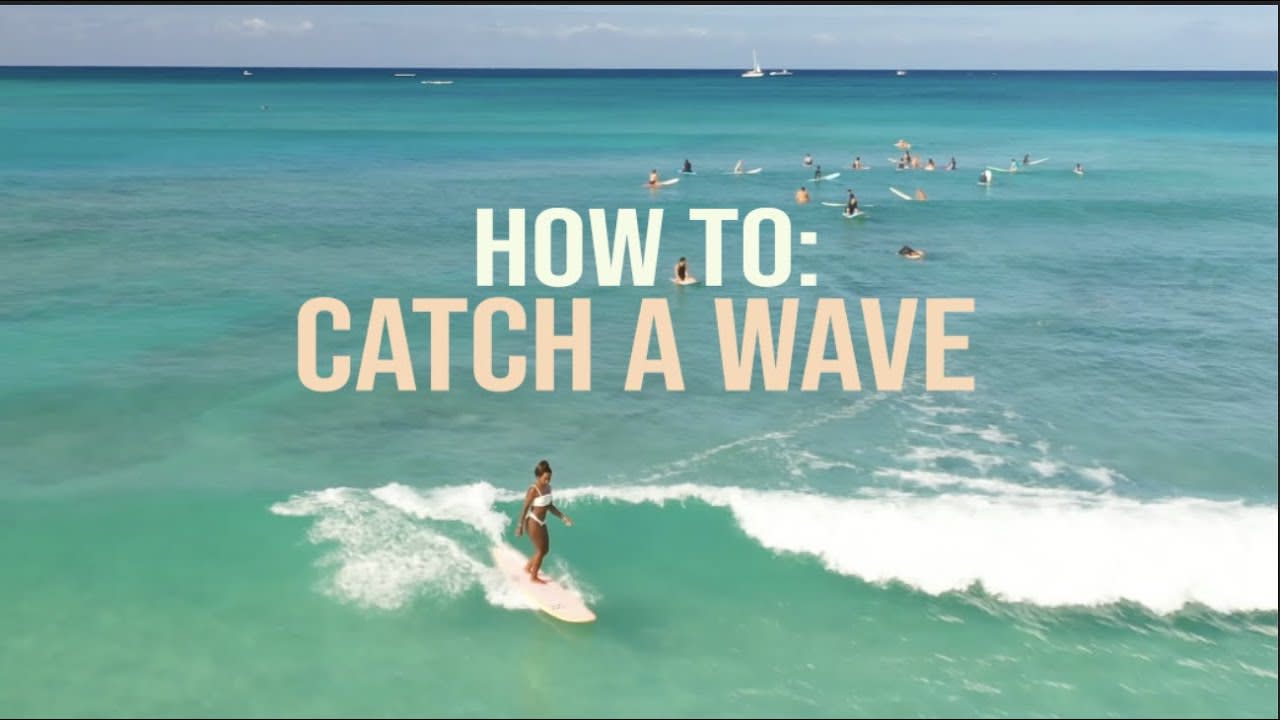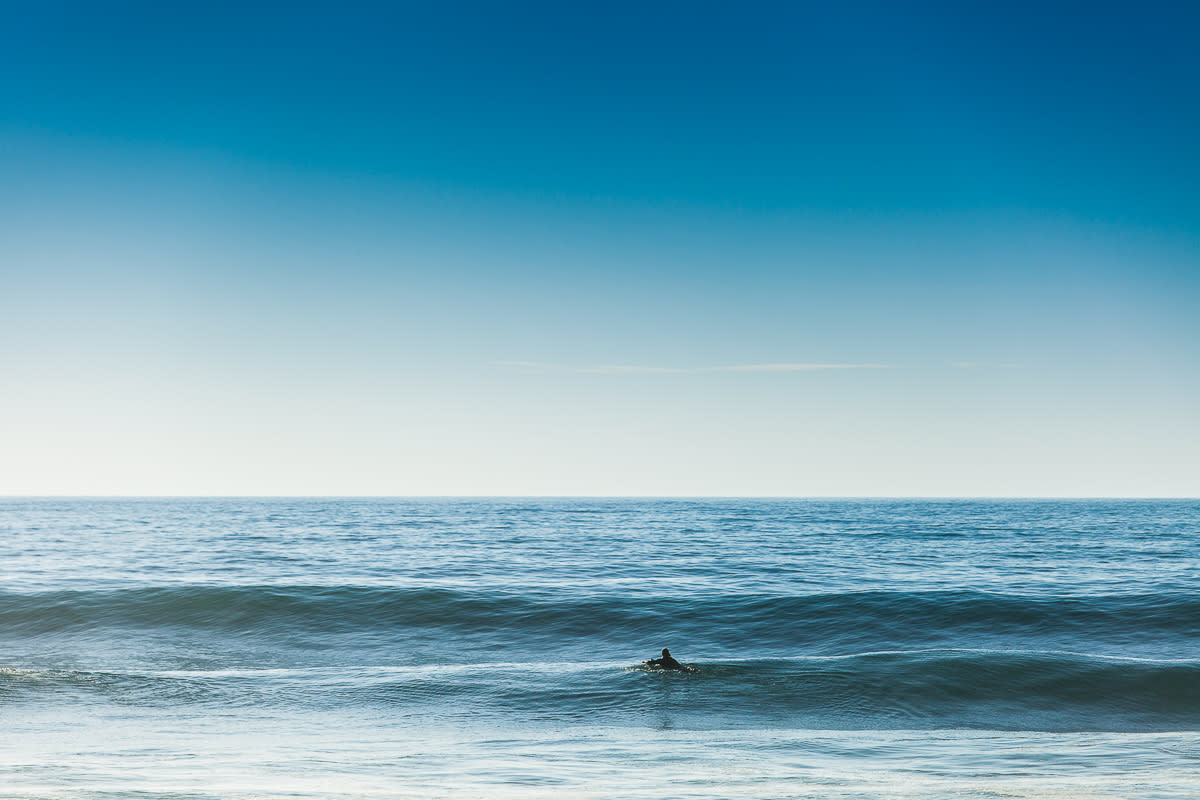
How to catch an unbroken wave
June 30, 2025Do you feel unsure when to take off or how to identify a surfable wave? This guide is here to help you understand the stages of a wave and the timing of a take-off.
Surfing is a great journey and an amazing lifestyle. Deciding to become part of the sport most likely will start with you deciding to book that plane and surf school/surf camp. Sooner than you think it will be your first day at that surf school/camp and you will have the best time with new friends. It’s all about laughter and enjoying the moment.
Memories are what make us rich and being close to nature lets us feel alive. Even if you have already had this experience this guide is for you. This blog post is about a tricky stage in surfing you will most likely come across.
VIDEO
How To Catch A Wave | How To Surf

When learning to surf you will stay in shallow water and stand up on your surfboard, when an already broken wave is letting you catch speed. After having mastered the technique of standing up and being safe doing it, you will get to paddle out to the line-up in the ocean with an instructor and surf a green wave.
This is a wave that has not broken/crumbled yet. It is a super exciting experience and gives you that incomparable feeling you were dreaming about. You have an instructor with you giving you guidance and helping you identify which wave to pick and when to start paddling for the wave resulting in the perfect timing to perform your take off.
But what about surfing by yourself? You may have already had your surf lessons and tried it. You have had a lot of fun out there. But you might find yourself wondering what exactly you need to do when to get the timing of each step right. Some of us are lucky and just get the timing right immediately.
But let’s be honest: most of us have to work hard to get better. We will fall a million times, nosedive and end up falling off our board. But when we train hard to find our way and master the timing for our takeoff, we will make it.
Lapoint is here for you and provides you with the theory and physics behind the breaking of a wave and explains the mechanism and steps. We will try and help you understand how it builds up, how it breaks and when is the best time for you to surf it.
STAGE A
Is this a wave or not?

We all know the quote about everything in life comes in waves like in the ocean. But in the ocean, itself, waves come in 4 different stages. Let’s just call each stage a different name to simplify them. A, B, C and D. From building up, to breaking, waves go through all four stages.
Stage A is the first stage. You will see the wave-like little lump of water gliding across the surface water towards you. I the wave arrives at your location at that stage, there is not enough power in to give you the speed to surf it.
The first surfers catching waves in rather early stages are the ones with large boards, like the Foam ones you have your first lesson on and surfers on longboards. These bards have a large amount of volume allowing you to match the speed quickly and catch it as soon as a wave crosses from stage a to stage B.
Stage B
Go hard or go home — how to surf a green wave?

In order to catch waves, they need to arrive at your location in stage B. It’s the stage where the previous “little lump” of water (stage A) grew more powerful. The energy is getting ready to be released. Stage B is where a wave is ideal.
If you are able to match the speed of the wave until you feel like you are gliding on the water surface and ready to take off, you make excellent use of this power and are able to surf.
Note: A wave can break either to the right or to the left. Just before take-off, you can look right and left to see which way to go to follow the wave's pocket. Also, check for other surfers that are already on the wave.
Feel free to check out our rules of the line-up post to learn more about surfing etiquette.
For everyone starting out or struggling with the right timing: You are a great surfer. You are doing good. Being in the right location AND getting up on time at the same time is one of the trickiest things to master. It will take time to learn, but you WILL have that moment where the little switch in your head switches. You will start to know to feel you have to be. You will start to see at what speed waves break.
When you arrive at a new spot or even one you already know, we recommend sitting and watching the incoming waves for a while before entering the water. It is not only important for planning where to sit and to see where the RIP currents, rocks or other obstacles are located, but also to check the speed of the waves and the direction they break. (If this sounded like a foreign language to you, don’t worry. You will learn about all this in your surf lessons.)
STAGE C
This could be getting risky
This is the power release, the breaking/ crumbling of a wave. While it is a moment of glory for some, it could end up as a round in the washing machine, headfirst and board flying up in the air, for others. Waves travel for kilometres before hitting the shore. The travel distance increases the amount of power building up.
The moment it breaks is the moment it is released. If you are not already standing on your board at this stage, the released power will more or less come down on top of you. That is the risk to take but also the moment of adrenaline making us come back for more every time.
STAGE D
Perfect and fun waves for beginners trying to practice their stands before going to the line-up
After the wave has broken, whitewash will make its way to shore. This is the part of a wave you will or have already learned to surf. It has much less power than an unbroken (green) wave, and you can stand up at any time, making it the easiest place possible to learn the technique. Waves in an already broken stage are a great way out of the water if you want the fast way in from the lineup! You can just paddle into a wave and stay in a lying position on your board! It is super fun and way faster than paddling back to the beach.
We hope this guide has helped you identify the different stages of an incoming wave.
Try and stay calm when in the water. Wait long enough before paddling when you see an incoming wave. Avoid ending up too close to shore and getting hit by the wave when it is at stage C. Remember to take a few powerful strokes and test if you are gliding with the wave before trying to take off.
In the end, nothing will beat practice. The speed and shape of each wave, as well as the way it breaks depend on the spot you are surfing and the conditions of the ocean. It will take time to learn to adjust to each of these conditions.
NEWSLETTER
Stay up to date, sign up for our newsletter

Maren Gimnes
Maren is a copywriter and content creator with a true passion for exploring the beautiful planet we call home. Her love for the ocean and salty days brought her to Lapoint, where she’s been living the digital nomad life and visiting our surf camps in all corners of the world. Maren aims to inspire others to pursue the surf lifestyle, to never miss a sunset and to follow their dreams.
Latest blogposts
June 30, 2025
June 30, 2025

